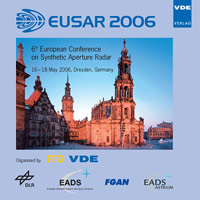Investigation of 3-D RCS Image Formation of Ships Using ISAR
Conference: EUSAR 2006 - 6th European Conference on Synthetic Aperture Radar
05/16/2006 - 05/18/2006 at Dresden, Germany
Proceedings: EUSAR 2006
Pages: 4Language: englishTyp: PDF
Personal VDE Members are entitled to a 10% discount on this title
Authors:
Lord, Richard T. (University of Cape Town (UCT), South Africa)
Nel, Willie; Gaffar, Mohammed Y. Abdul (Council for Scientific and Industrial Research (CSIR), South Africa)
Abstract:
Conventional Inverse Synthetic Aperture Radar (ISAR) utilises the rotational motion of a target such as a ship or an aircraft to obtain a 2-D image of the target’s radar cross section (RCS) profile from a coherent radar system. This concept can be extended to obtain a 3-D RCS profile if the target's translational and rotational motion has the required attributes and is known with sufficient accuracy. This paper is a preliminary investigation to see whether 3-D ISAR images can be generated with a single antenna, using an approach that is different from interferometric ISAR. Simulation results have verified that 3-D ISAR images can be obtained under certain circumstances. A major problem experienced with ship ISAR data is multipath reflection off the sea surface. Simulations have been performed, which illustrate the degrading effect of specular multipath on the final 3-D image.


